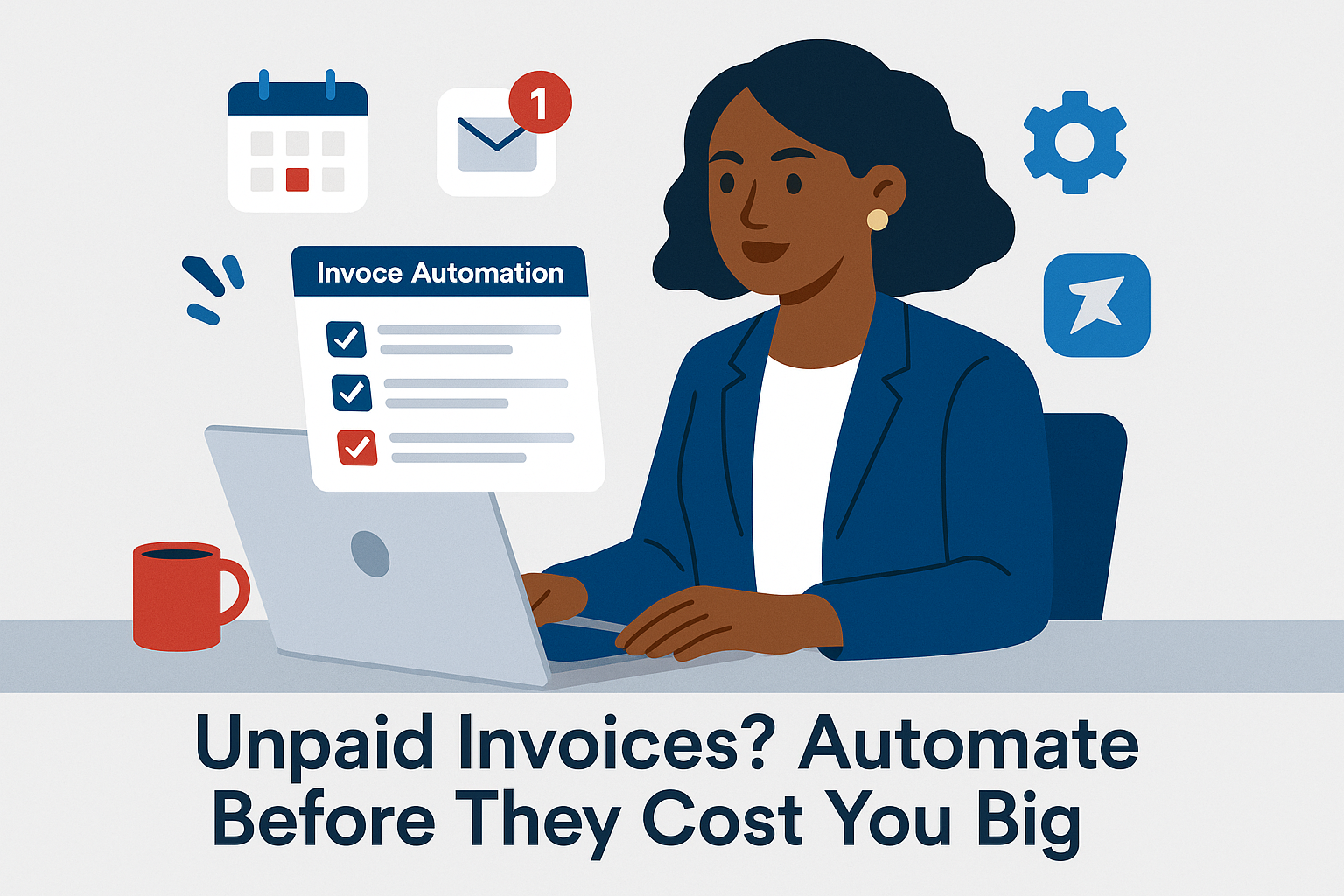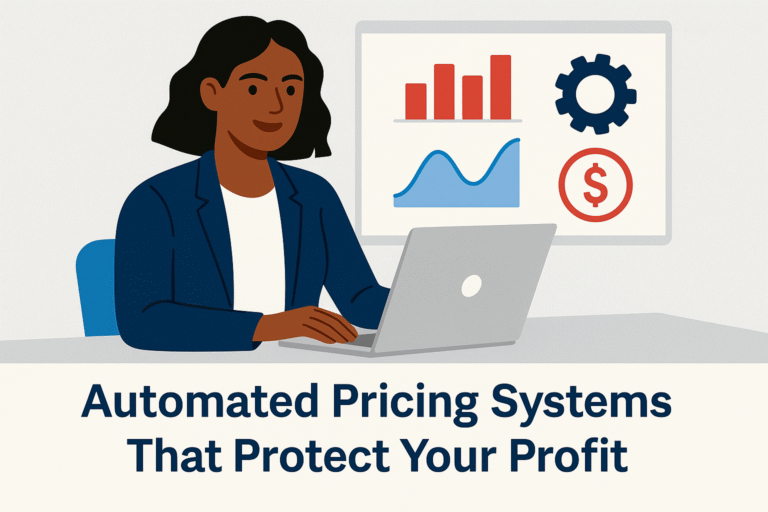Financial Freedom Fridays
Lean startup budgeting is what allows you to build a business without letting it consume your finances—or your peace of mind. It’s a way of approaching money that keeps you grounded, even when the excitement of new ideas tempts you to overspend.
I learned that lesson the hard way. The first time I launched Backbone America after a layoff, I went all in—running up credit cards and draining savings because I thought that was the only way to succeed. All it did was create more stress. When I came back to the business years later, I took a different approach. With the stability of a paycheck, I gave myself the space to test and adjust before spending. That shift in how I budgeted made all the difference.
And that’s why lean startup budgeting matters for you, too. Especially if you’re balancing a business alongside your career, it lets you grow strategically without feeling like you’re gambling everything you have.
What Lean Startup Budgeting Really Means
Lean startup budgeting isn’t about cutting costs to the bone. It’s about being intentional—spending only where it creates learning or growth. Too many new entrepreneurs mistake “lean” for “cheap,” and end up starving their business of the resources it actually needs. The goal isn’t to avoid spending altogether—it’s to invest wisely and strategically.

I was reminded of this recently when I saw a Facebook post that said, “What kind of remote business can I start that doesn’t require any investment?” It’s a common question, but also a misleading one. Every business requires an investment—whether that’s your time, your money, or both. The difference is how you manage that investment so it builds momentum instead of becoming a financial drain.
Lean startup budgeting helps you find that balance. It gives you permission to start small, test ideas, and scale gradually—without the pressure of having to “bet it all” on one shot.
The Core Principles of a Lean Startup Budget
At its heart, a lean startup budget is about clarity and discipline. Yes, you need some resources to move forward—businesses can’t run on nothing. But the real difference comes in how you direct those resources. A lean approach means even a modest budget can fuel growth when it’s spent strategically.
1. Every dollar has a purpose. Whether it’s testing an idea, building infrastructure, or scaling something that works, money in a lean startup budget is never spent just because it’s “what businesses do.” It’s allocated to move you forward.
2. Growth comes from validation, not assumption. Instead of investing heavily in a big launch, lean budgeting encourages small experiments. You test, measure results, and only then decide if it’s worth putting more money behind.
3. Prioritize must-haves over nice-to-haves. A lean budget means focusing on tools and resources that drive growth—like a reliable website platform or a system for managing leads—while postponing extras like polished branding packages or expensive office furniture until your business revenue supports them.
When I rebuilt Backbone America, I kept this front of mind. In the early days, I resisted the urge to sign up for every new tool or redesign my site endlessly. Instead, I focused on testing what would actually bring in clients. That discipline kept me from repeating the mistakes of my first attempt, where I treated spending itself like progress.
Strategic Growth Without Financial Waste

For example, instead of sinking thousands into a custom website right away, you might start with a simple landing page. Run a small ad campaign, see if people sign up for your offer, and use that information to decide your next move. If the response is strong, you can justify putting more money into marketing or technology. If not, you’ve learned an important lesson at a fraction of the cost.
When I restarted Backbone America, this approach kept me steady. I didn’t invest heavily upfront. I tested, adjusted, and reinvested slowly. Some experiments worked, others didn’t—but none of them broke me financially. That’s the power of leaning into strategy over speed.
Avoiding Common Budget Pitfalls
Even with the best intentions, it’s easy to let spending spiral in the wrong direction. A lean startup budget helps protect you from some of the most common traps entrepreneurs fall into:
Overspending on appearance. Many new founders pour money into logos, websites, and branding packages before they have a single paying customer. Strong branding matters—but not before proof of concept.
Forgetting about recurring costs. Subscriptions, transaction fees, and hidden charges add up quickly. What looks like $29 a month can quietly multiply across multiple tools.
Neglecting taxes and compliance. It’s tempting to focus only on growth, but ignoring obligations like business licenses or quarterly taxes can lead to costly surprises later.
Assuming more money equals more success. I learned this the hard way in my first attempt at Backbone America. I thought throwing money at the business would push it forward, but all it did was push me deeper into debt. A lean budget keeps you honest—it forces you to spend with intention, not emotion.
By spotting these pitfalls early, you give your business a better chance to grow sustainably instead of collapsing under financial strain.
Scaling with Systems, Not Just Spending

Instead of hiring a large team right away or working around the clock, you can put your dollars into tools and automations that carry the load for you. A lean budget frees up resources to build smarter workflows, so you’re not trapped trading every hour for progress.
This was a turning point for me with Backbone America. When revenue started to grow, I didn’t funnel it into appearances or unnecessary overhead. I invested in systems that reduced manual work—automations that gave me back my evenings and weekends. That shift allowed me to serve more people without burning out.
And that’s the light at the end of the tunnel for you, too. Lean startup budgeting isn’t just about restraint—it’s about creating the foundation for freedom. When you scale with systems, you’re not just building a business; you’re designing a way of working that leaves space for your life.
Final Thoughts on Lean Startup Budgeting
Lean startup budgeting doesn’t mean holding your business back—it means giving it the chance to grow in a way that’s sustainable and strategic. By starting small, testing, and reinvesting with intention, you avoid the stress of desperation spending and create room for smarter decisions.
The difference shows over time. Instead of a cycle of debt and burnout, you’re building a business that funds itself, step by step. And with each smart choice, you move closer to the kind of freedom that inspired you to start in the first place.
If you want more tools and insights to help you scale without wasting money or energy, join my mailing list. You’ll get access to resources designed for employed entrepreneurs who are building their businesses the smart way—not the desperate way.
Sign up here to stay connected.






